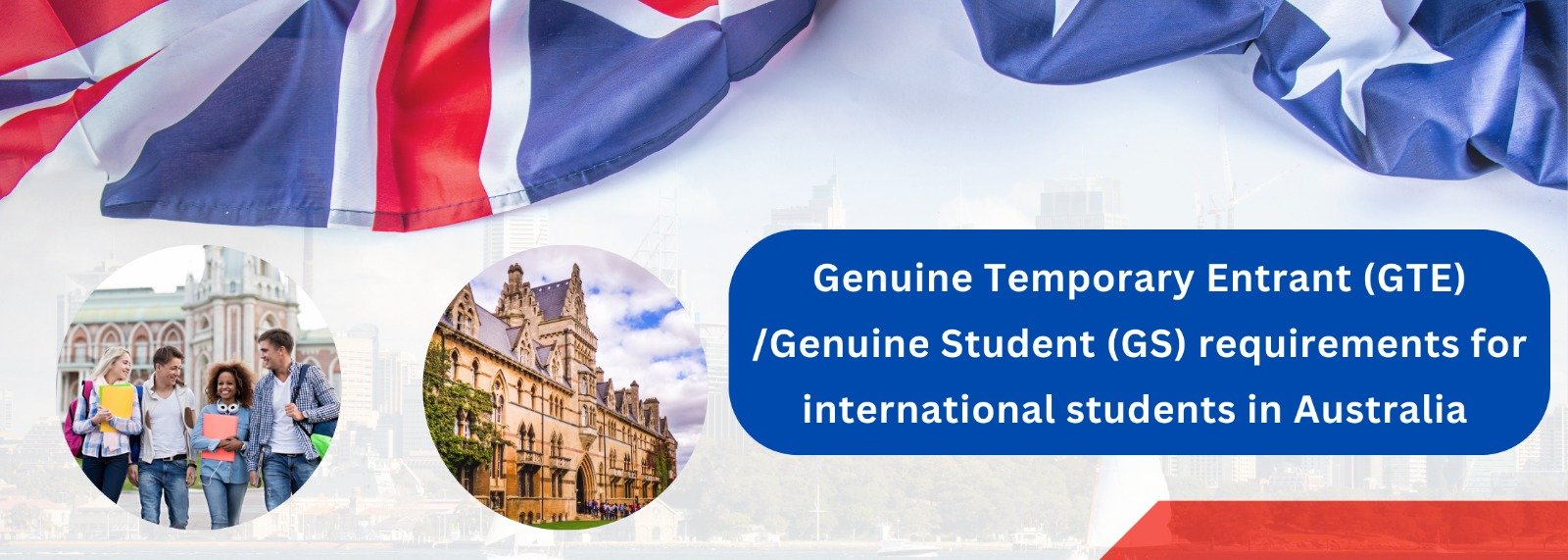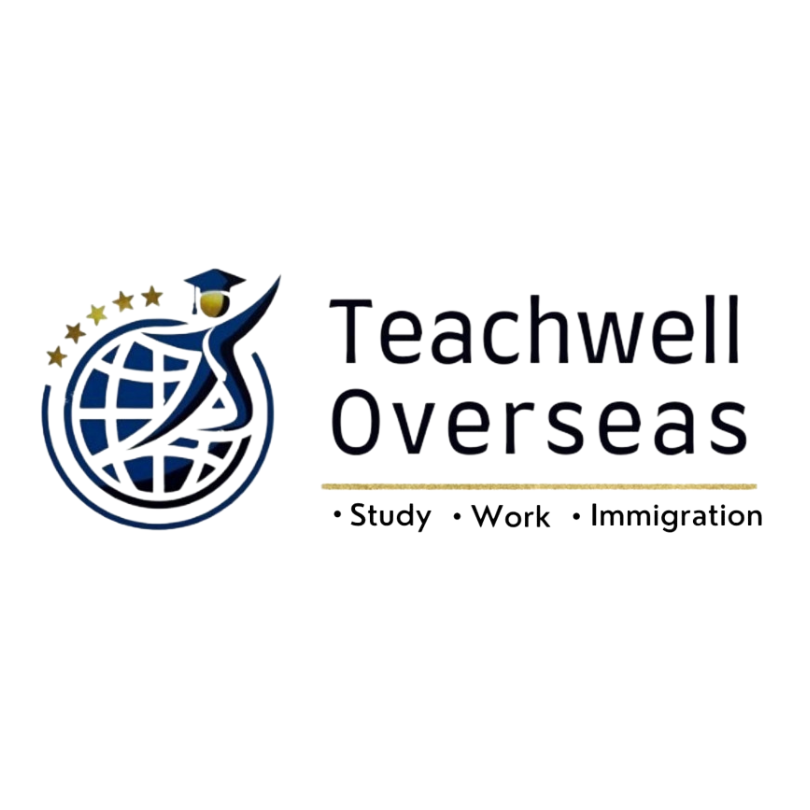
Australia’s leading universities make it a dream destination for many students. However, a student must meet the Genuine Temporary Entrant requirement, now known as the Genuine Student requirement, in order to pursue their education in Australia. The Genuine Student (GS) requirement involves demonstrating that the applicant has a genuine interest in studying at Australian universities and do not intend to overstay their granted visa.
The Higher Authorities of Australia use several criteria, including information from the GTE/GS assessment, to evaluate the student’s sincerity in their educational goals. Therefore, an applicant needs to provide accurate and reliable information throughout the process.
The Australian Government has introduced the Genuine Student (GS) requirement to replace the previous Genuine Temporary Entrant (GTE) requirement. The GS requirement is designed to assess the authenticity of an applicant’s intention to stay in Australia temporarily for educational purposes. It helps distinguish between genuine students and those who may attempt to use the student visa program to remain in Australia indefinitely.
The Higher Authorities of Australia use several criteria, including information from the GTE/GS assessment, to evaluate the student’s sincerity in their educational goals. Therefore, an applicant needs to provide accurate and reliable information throughout the process.
All candidates must meet the GS requirement, which consists of a series of examinations, to demonstrate that they are visiting Australia temporarily and are not doing so to get permanent residency. It is recommended that candidates submit a self-written, English-language GS statement outlining their eligibility for the program. Additionally, applicants must submit several facts; however, comments that lack verifiable proof are not given much weight. It is necessary to include genuine records and data in one’s declaration, such as:
- Previous academic qualifications: candidates are required to submit transcripts, degree certificates, supporting documentation, and specifics about their prior performance. The name of the education provider, the length of study, and the certificate of attainment must all appear on the transcripts.
- Gap justification: During the GS evaluation, students are required to disclose any gap years they may have had, along with the circumstances surrounding them, such as any periods in which they did not continue their enrolment.
- Employment details: Candidates must provide details regarding their employment. It contains information on the company, the worker’s tenure, the current employer, and any supporting documentation like salary slips, bank statements, and detailed resumes with roles and responsibilities mentioned on them.
- Proof of having close ties to one’s native country: To demonstrate a compelling reason for their return, applicants must submit documentation of their family history as well as evidence of their financial and familial ties in their nation of origin.
- Economic situation: Candidates must submit documentation outlining their financial circumstances. This includes records of their work or commercial endeavors, income tax returns, and bank statements belonging to their sponsors or relatives.
- Reason to choose Australia: Candidates must explain why they selected Australia over other nations. Details on their living arrangements while in the nation, as well as information about any partners, spouses, and children (if any), siblings, relatives, or acquaintances who live in Australia, must be provided.
- Proper Documentations: For the information supplied during the GTE/GS process to be deemed trustworthy, all assertions made must be backed up by official documentation. The points that are discussed must coincide with those listed in the supplied documents.
A well-prepared GS statement is critical for a successful visa application. Here are some tips to craft a strong GTE/GS statement:
- Be honest and clear: Clearly outline your genuine reasons for choosing Australia, the specific course, and how it aligns with your career plans.
- Highlight your ties to your home country: Emphasize the factors that will motivate you to return home after your studies, such as family responsibilities, job offers, or business plans.
- Provide detailed information about your research: Demonstrate that you’ve thoroughly researched your course, institution, and the benefits of studying in Australia. Explain why you didn’t choose other countries for your studies.
- Mention future plans: Describe your career aspirations and how the course will help you achieve them in your home country.
- Be Consistent: Ensure that all the information in your GTE/GS statement is consistent with other parts of your visa application.
- Seek Professional Advice: If you’re unsure about how to present your GTE/GS statement, consider seeking advice from an education consultant or migration agent.
- Provide Evidence: Support your GTE/GS statement with relevant documentation, such as job offers, financial statements, or family obligations.
A simplified procedure for the Genuine Temporary Entrant (GTE/GS) evaluation has been put in place in Australia. In order to assess the sincerity of the applicant’s intention to settle in Australia, the process consists of a questionnaire and personal statements.
When a student applies, some colleges and universities immediately provide them the link to the GS questionnaire; others could ask for the questionnaire to be completed in addition to a conditional offer letter. In such circumstances, higher authorities may invite a few chosen applicants to a GS interview.
The individual is then qualified to apply for an Australian Student Visa after meeting the GS requirement. The procedure is designed to make sure that people who want to study in Australia are serious about obtaining their degree and don’t have any other reasons for visiting the nation.
The GS requirement is a vital component of the Australian student visa application process, designed to ensure that applicants are genuinely focused on pursuing their studies in Australia. By thoroughly preparing your GTE/GS statement, supporting it with verifiable evidence, and understanding the key aspects of the GTE/GS assessment, you can significantly enhance your chances of a successful application. Remember, honesty, clarity, and consistency are crucial in demonstrating your intentions. With careful planning and attention to detail, you’ll be well on your way to embarking on your educational journey in Australia.
Q-1: Do all applicants need to undergo a GTE/GS interview?
Not all applicants are required to undergo a GTE/GS interview. However, some universities and higher authorities may request an interview as part of the GTE/GS assessment process for selected candidates.
Q-2: How long does the GTE/GS assessment process take?
The GTE/GS assessment process can vary in duration depending on the complexity of your case and the volume of applications being processed. It’s advisable to apply well in advance of your intended study start date to allow sufficient time for assessment.
Q-3: Can a strong GTE/GS statement guarantee my student visa approval?
While a strong GTE/GS statement significantly improves your chances, it does not guarantee visa approval. The decision is based on a combination of factors, including your overall visa application, documentation, and compliance with other visa requirements.
Q-4: How do I explain gap years in my GTE/GS statement?
You should clearly explain the reasons for any gap years in your education, including what you were doing during that time, such as working, traveling, or handling personal matters. Providing documentation or evidence to support this explanation is recommended.
